Vellum Venom: 1985 Lamborghini Countach LP5000 QV

I stood face-to-fascia with a childhood dream, thanks to a tangential connection to Houston’s 2016 Lamborghini Festival. And yet, like all designs born pure and modified to remain relevant, the original Lamborghini LP400’s purity of form is sometimes absent in this time capsule, all-original LP5000.
But please believe that, LP400 or no, it took every fiber of my being to avoid the typical auto journo blather on this sheet of vellum.
No offense to the 2005 Ford GT, but the Countach was—and remains—the Pace Car For An Entire Company. Its DNA lies within Lambo’s latest iron: strong triangulation/trapezoidal themes, an impossibly low nose, and those unforgettable rear-engine supercar proportions are present on today’s Huracán and Aventador. Peep this photo for proof.
The Countach’s beauty lies in how every hard bend and geometric shape changes its demeanor relative to one’s vantage point. Like the trapezoid hood above versus the last photo. Also note how the fender haunches protrude above the hood’s plane, less obvious in the last photo.
Yep, real aluminum slats. Sadly, the LP400’s useless, flat-faced aluminum “non-bumper” befits the body better than this bumperette.
This gorgeous lighting pod naturally draws your eyes to the brand name.
I’d expect the Countach to be hastily assembled in the Italian supercar tradition, but the threaded license plate hardware says otherwise.
I hope someone knows the reason for the emblem’s two clear bubbles. Other manufacturers have done better for decades before this.
Compared to the aforementioned LP400 panel, note how the evolution to a bumper to meet (a modicum of) accident protection completely changes the shape of the “fender”. Shame — the LP5000 Countach has a “double chin” look.
And no, this isn’t an American-bumper double chin: this is a Euro-spec LP5000.
The double chin bumper adds an unnecessary plane to the body’s flat, powerful thrust. It also distracts from the delightful sliver-toned negative area where the signal/marker light resides.
Perhaps this nit couldn’t be picked if the bumper mirrored the fender’s vanishing point.
But said vanishing point looks properly parallel from a higher angle. The contrasting trapezoidal hood cutline adds more excitement, just like on a modern Lambo.
And so much taper in that fender!
Hidden headlights (within an unassuming panel) were all the rage in Italian design studios. They did a great job lowering the nose and increasing the “less is more” aesthetic. Both are sorely missed today.
There’s that ill-advised bumper vanishing point again! Owners of LP400s can squat this low in admiration of their rides, but the hood/fender surface tension goes awry with afterthought bumpers.
Bumpers aren’t a liability at this angle. Adding that legendary trapezoidal windscreen and we’re done.
The surface tension between the hood and fenders is clear(ly stunning).
Note the ceiling’s bent fendertop reflection: stunning surface tension!
A canvas devoid of clutter earns a hall pass for exposed wipers with c-clip. Perhaps it adds to the Countach’s engineering fortitude?
The use of silicone(?) adhesive is everywhere. Such “handcrafted character” is thankfully a relic.
But step back, and who cares? That windshield is pure 1970s fantasy, a sign of unreachable 1980s status. The strong triangular elements are, once again, pure Lamborghini DNA.
Sure, those slapped-on bumpers, fender extensions and large air-intake feature are over the top. But all will step back in awe at the brutalist triangular elements and low slung, rear-engine proportioning.
This car once ruled the world. For good reason.
The LP400’s less angular, flat wheel arches disappeared for these iconic LP5000 trapezoidal flares, integrating the “heavy” feeling bumper and echoing triangle DNA.
(Please disregard the mere Jaguar in the background!)
More Triangle Talk: windscreen, the front fixed window, the depressing little DLO non-failing spot, and the lower half of the door’s cutline. Much DNA present.
It’s all quite perfectly triangulated, by design.
Too bad the fixed vent window glass couldn’t extended further and eliminate this DLO non-fail.
Oh, that Italian supercar panel fitment! Only bested by exposed black adhesive.
Most 1970s designs were aerodynamically challenged by 1985 standards, and these doors must have been a nightmare to seal at high speed.
Can you imagine this with a bespoke mirror design? The adjustable rubber boot affair get the job done, but they detract (rather than seek inspiration) from the body.
And the triangle theme grows stronger when the portal swings open! Such a staggeringly steep line guarantees a triangle theme! The Aventador is Dodge Avenger mundane from here.
Admire the low slung, triangle-intensive greenhouse: daring doesn’t cover it.
The quarter window (as it were) drops deep, transitioning to intake vents.
So deep that the plane containing the seat belt anchor continues the triangular theme inside!
No surprise, there’s cooling functionality behind the grilles.
The quarter window looked square a few photos up, but here? Totally triangulates with the theme, plus it kind of looks like the Diablo!
The forward facing scoop is pure sci-fi spaceship. Note surface tension from the “bent” top.
The scoop’s “neck” looks unfinished at the front: a brutal transition for sure.
Triangles, rhombuses, squares and rectangles at countless angles. Depending on your vantage point, sometimes a rectangle appears like a rhombus and vice versa.
Flame surfacing is a stupid way to make a car come alive — instead, have faith in one’s ability to walk around a cohesive design that changes shape as you move with it.
The intake scoop’s full profile is a logical (yet jolting) addition to the greenhouse’s natural lines.
If only that scoop had the same level of tumblehome (i.e. the top-to-bottom taper) of the quarter window: far less jolting. But the further back and lower you go, the Countach rewards with rounder elements equalizing the brutalist geometry.
Note the chrome release for the scissor doors: if only the 1990s automotive aftermarket didn’t marginalize this.
This massive triangle-esque body scoop element is an almost vulgar interruption to an otherwise clean bodyside.
Why vulgar? The arbitrary tape line of this all original (i.e. nobody’s painted it) example’s flat-black design feature: less iconic and more kit car. A slight transitional dip in the body would let the black paint “sit” nicely in a proper home.
Pininfarina didn’t half-ass the Testarossa like this mixed bag.
Note the rounder elements of the rear wheel arch: not perfect, but a logical solution for wider tires on the narrow LP400.
It would have been nice — real nice — if the body scoop’s most rearward line shared a vanishing point with the door cutline, as they currently fight each other.
But the body scoop’s upright status complements the upper scoop.
This is a challenging car to critique.
So step back and soak those proportions, those minimalist geometric undertones. Too bad Pablo Picasso died the year before the LP400 hit the assembly line. I reckon the cubist co-founder would be rightly inspired by it.
The LP5000’s extra flare detracts from the hard-nosed brutalism present in such a strong drop from the rear bumper (as it were) to the rear wheel.
The same story at the front wheel well, to a lesser extent.
Just imagine if the wheel arch/flare was gone — such brutality in form! While not without its charms, the flare changes the demeanor of the conversation.
There’s something disconcerting about the number of parts to make this flare. Perhaps it goes against the spirit of the LP 400?
Oh dear. Just like the windscreen, there’s black silicone (?) used like grout between tiles.
Countach wheel DNA peaked a few years before. Originally with cylindrical barrels projecting from each hole like a six (well, five) shooter pistol, these restyled hoops seem almost pedestrian.
Their fate was sealed when the Honda CRX and Ford Escort/EXP copied ‘em.
Delaminating chrome is sad on a low mile original example. WWGD? (What Would Gandini Do?)
I’ve alluded to Brutalism, and the Countach’s posterior geometric architecture makes a strong case for the minimalism better known from concrete postwar buildings. You’d think Brutalism would make the Countach appear slow, but no!
Like a cheese wedge presented on a platter, with its pointy edge rudely cut by an uncouth guest, another triangle theme emerges at the rear. If that analogy didn’t work, consider this like a Play-Doh extrusion tool with the cut-off lever.
If only Play-Doh had an extrusion tool with this shape!
This posterior’s aggressive shape blends logically with every triangle theme from the B-pillar forward.
The vents on said extruded form aren’t flush fitting; disappointing in a minimalist-interrupted way.
Much like that rear fender flare sealed with black silicone, too many parts make up a single taillight.
Separate red reflector.
Three layers: the red base, the white backup lease and the red icing atop the white lens.
All lower-case lettering is an exciting contrast against today’s MINIs, FIATs, and KIAs. But the clumsy one-piece, underlined emblem underscores this design’s “I’m too advanced for current production techniques” demeanor.
That extruded, brutalist shape has serious depth. Oh, and more black goo, too.
Rear plate holder aside, the volume of negative area on this posterior is a Sir Mix-A-Lot song played backwards.
Again, lower case because it’s a lamborghini. And flat black for understatement, because chrome is for jerks.
Is that another triangle shape inside the hood/cargo area?
And does it add even more negative area excitement to the Countach? Why yes, yes it does.
“You want more trunk space and I want more negative area! How much crap you wanna carry in this masterpiece, anyway?”
The hood’s “power dome” drives the Brutalist architecture theme home. It’s enamoring, like the Logan’s Run escape scene, filmed at a decidedly brutal location: the Fort Worth Water Gardens.
I wonder how well these cooling vents perform, forced to fit in such a rigid, architectural aesthetic.
Who cares: it’s intoxicating.
“There… is… no… sanctuary.”
Too bad Logan 5 didn’t hop into a Countach after escaping from the Fort Worth Water Gardens.
These cooling features could be the Countach’s most impressive feature. It serves a purpose — an engineering need — while making a statement no less bold than an impossibly low greenhouse with challenging scissor doors.
And yet, it’s somewhat hidden within a large negative area on the body. More to the point: when you think Countach, do you recall these features?
Gandini cared not for ergonomics or conventional supercar wisdom with the LP400 (and its successors). What he gave us is no different than Moroder’s contribution to music. Thank goodness for that: he blended static geometry and the Brutalist Architecture aesthetic into a wildly popular Supercar. Sure, the classically-styled Miura came first, Pininfarina’s Testarossa excels in surface detailing and driver-focused ergonomics, but the Countach pushed the supercar into the stratosphere.
Most importantly, the Countach’s DNA remains abundantly present in today’s Lamborghinis. Can’t say that about any Ferrari from 40-plus years ago…at least not with a straight face.
Thank you for reading (the fruits of my 20-plus hours of labor) — I hope you have a wonderful holiday.

More by Sajeev Mehta
Latest Car Reviews
Read moreLatest Product Reviews
Read moreRecent Comments
- Lou_BC Sweet car.
- FreedMike With 157K miles, that's basically a beater that looks good. Plus, I heard Honda CVTs turn dicey with age. I'm a "no" at $12,500, but someone's heart will go all aflutter over the J-vin (Ohio-vin?) and pay up. With a manual in the same shape, I'd be in for a LOT less.
- EBFlex More proof the EV world is crumbling. In a market with supposedly “insatiable demand”, these kinds of things don’t happen. Nor do layoffs.
- Buickman 17 Lacrosse, 18 Enclave, 19 Stingray Drop.each Red, Tan guts.I just want to feel this moment, and I own it~ (them, sic)
- FreedMike Dodge always had the best colors on the Challenger. I particularly liked Hemi Orange and Plum Crazy. Otherwise, give me Mazda's Soul Red.



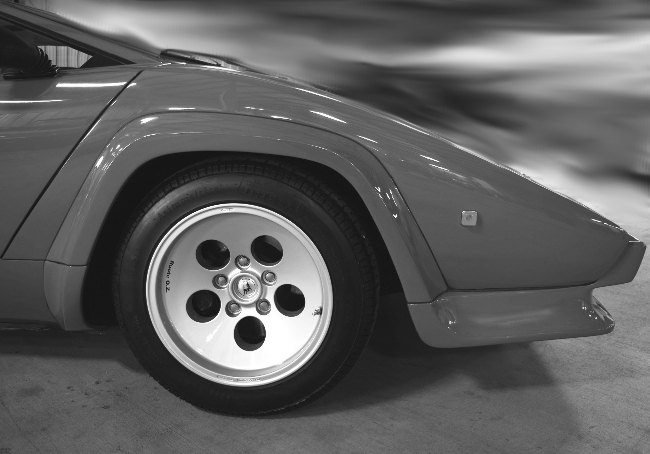















































































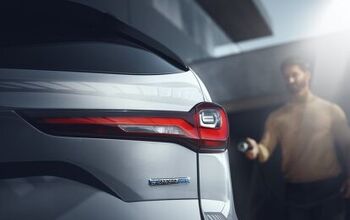


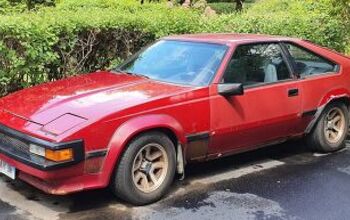

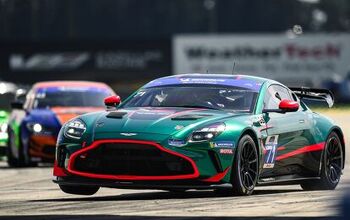



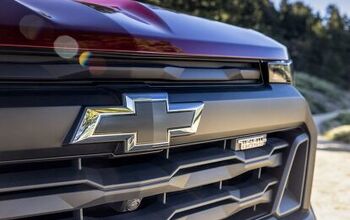

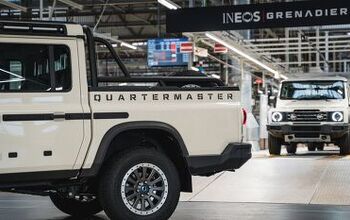

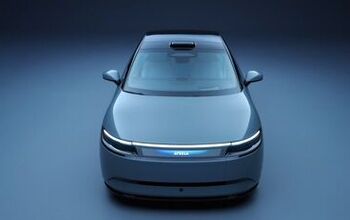



Comments
Join the conversation
ghandi would have ordered his countach with the spoiler
Hello Sajeev! Stranger here, but this write-up was very helpful. Thank you so much. i needed to know some of the details in this article, and here they were. Thank you for taking the time to put it all together. i created an ID and logged to simply say that, and thanks again.